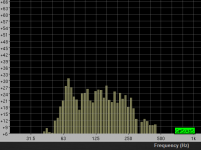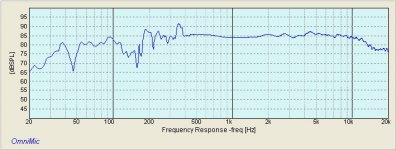Reduced volume at about 100 hz, I cant figure it out why
Hello
I built two boxes for my BMS s330 speakers. They are 25l tuned to 46hz. I took measurements and I find that there is a gap at about 100 hz. why do you think this is happening? I have other boxes that have similar problems.
I think maybe putting 45 degree angles in corners of the box, but I would like to hear your opinion because I am very tired of experimenting...
Also a good book on enclosure geometry would be nice to read, if you have something in mind.
Thanks
A
Hello
I built two boxes for my BMS s330 speakers. They are 25l tuned to 46hz. I took measurements and I find that there is a gap at about 100 hz. why do you think this is happening? I have other boxes that have similar problems.
I think maybe putting 45 degree angles in corners of the box, but I would like to hear your opinion because I am very tired of experimenting...
Also a good book on enclosure geometry would be nice to read, if you have something in mind.
Thanks
A
Attachments
-
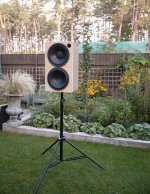 14444603_651180945050758_2592457042598734071_o.jpg173.8 KB · Views: 125
14444603_651180945050758_2592457042598734071_o.jpg173.8 KB · Views: 125 -
 14462866_651180328384153_2301910015823663653_n.jpg146.4 KB · Views: 122
14462866_651180328384153_2301910015823663653_n.jpg146.4 KB · Views: 122 -
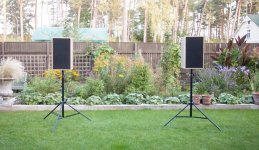 14470577_651180291717490_9104295414332924670_n.jpg124.8 KB · Views: 129
14470577_651180291717490_9104295414332924670_n.jpg124.8 KB · Views: 129 -
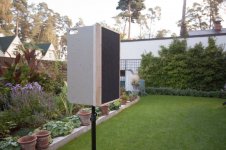 14516612_651180278384158_5704388631946971106_n.jpg85.3 KB · Views: 123
14516612_651180278384158_5704388631946971106_n.jpg85.3 KB · Views: 123 -
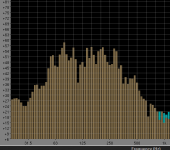 bm.PNG34.5 KB · Views: 126
bm.PNG34.5 KB · Views: 126
Last edited:
I'm sorry I answered wrong, I think I'm exhausted and making things up. - I just measured again on the floor and its gone! Can you please kindly explain how this happens? SorryAre you measuring them while they are on the stands ? - It could be a null caused by floor bounce. (Try measuring groundplane)
A
As mentioned by Rob, it's floor bounce. It happens when your mic is 1 meter away and your mic height is also at 1 meter.
You can see the effect from my sweep. Gated is down to 500Hz. Below that, my room is interfering with the measurement. Nonetheless, it does show the notch caused by floor bounce.
Regards
Mike
You can see the effect from my sweep. Gated is down to 500Hz. Below that, my room is interfering with the measurement. Nonetheless, it does show the notch caused by floor bounce.
Regards
Mike
Attachments
I'm sure this answer was trying to be helpful, but it could be misleading to the (novice) reader. It has nothing specific to do with 1 meter. It has everything to do with the fact that the microhpone is picking up MULTIPLE SIGNALS that have traveled DIFFERENT DISTANCES between the loudspeaker and the mic. As a sound wave travels it is continually changing it's phase angle - it's a basic property of a propagating wave. In the situation where two waves, having each traveled different paths and therefore different distances, reach the same point they will each have a different phase angle. The receiver adds them up (sums them) in terms of both amplitude and phase. When the phase angle exceeds 90 degrees there begins to be cancellation and where the phase angle is 180 degrees you have (at least on paper) perfect cancellation between the two waves.As mentioned by Rob, it's floor bounce. It happens when your mic is 1 meter away and your mic height is also at 1 meter.
What is happening is there is one wave traveling straight through the air from your speaker to your microphone. The speaker (at low frequencies like 100Hz) is radiating omnidirectionally with equal power, so for instance the wavefront that radiates downwards will reach the floor, which is a good reflecting boundary, and bounce upwards again like a ripple in a pool reflecting off of the edge. It reaches the microhpone LATER in time because it traveled at the same speed but took a longer path (by geometry). You can use trigonometry to figure out exactly what the phase angle is for these "other" paths when they reach the mic. If the soundcard or measuring device collects sound for a finite length of time that is longer than the time before the first reflected wave reaches the microphone, you will be capturing both the direct sound AND one or more reflection of the source that have different amplitude and phase, depending on what they did on their journey. If you are making what is loosely called "in room" measurements the measurement includes these reflections and you can not know what the source is actually doing in terms of frequency response. The dip is caused when one or more reflections and the direct sound partially (or fully) cancel.
The reason such a dip does not sound terrible is that one does not listen with a microphone! You listen when sound is picked up (continuously) by your ears and interpreted by your BRAIN, e.g. it's a HEARING process. This process is not at all modeled by a microphone. In fact your brain is a pretty sophisticated piece of sound processing equipment and it has learned or adapted to these reflective environments that we exist in. So when you HEAR the speaker you brain also hears all the echoes and figures out (knows!) that this is a source in a room, located at a certain height above the ground plane. That is how you can close your eyes and still know "where" (in what direction) something is located by "hearing" it. This process works best around 1kHz, but is still somewhat functional even down to almost 100Hz. Below that in frequency the direction of sound is difficult to determine because the wavelength is so long that the phase is the same at both ears at the same time.
Last edited:
- Status
- This old topic is closed. If you want to reopen this topic, contact a moderator using the "Report Post" button.
- Home
- Loudspeakers
- Subwoofers
- db dropping at 100 hz, sub, need your opinion
